💃 Charo, Salsoul & the Disco That Shouldn’t Have Worked (But Did)
The Twelve Inch 170 : Stay With Me (Charo)
Usually, the research for these posts starts with a solid base. That wasn’t the case here. I stumbled across Charo’s 1977 single with the Salsoul Orchestra, “Dance a Little Bit Closer.” A modest hit on both sides of the Atlantic, but what caught me first was the accent. It was amusing, and it pulled me in. I wanted to understand the backstory, but the deeper I looked, the more tangled and contradictory it all became. Charo has spun a web of conflicting stories around nearly every part of her life and career.
Still, I stuck with it. And what you’ll read in this week’s episode is probably as close as we’ll ever get to the real story of Charo, the talented woman who turned what many saw as her biggest disadvantage (her accent) into her greatest strength.
Let’s introduce the accent
Charo might be best known for her comic timing, catchphrases (Cuchi Cuchi), and thick accent, but in 1979, she released one of Salsoul Records’ boldest disco twelve-inches. It didn’t top the charts. It didn’t break through. But it still stands as one of the most surprising, smart, and joyful disco records of its time.
But let’s start with the basic questions. Was Charo a novelty act, a flamenco prodigy, or one of the most unlikely queens of New York’s underground dance scene? The answer, oddly, is yes to all of the above.
How did a woman known for her thick Spanish accent and comic timing become the voice of a lush, orchestrated 1970s disco twelve-inch? And how did she go from Cugat’s arm to Vince Montana’s studio to a glittering spot on the Salsoul Records catalog?
Let’s take a spin back to the late ‘70s to find out. “Stay With Me” 😃
Welcome, I’m Pe Dupre and I’m really glad you’re here. This is “The Twelve Inch”, my newsletter that tells the history of dance music between 1975 and 1995, one twelve inch at a time.
If you’ve received this newsletter, then you either subscribed or someone forwarded it to you. If you fit into the latter and want to subscribe, please do so. That way you will not miss any of my weekly episodes.
🇪🇸 The Spanish Girl with the Guitar
Pink anyone?
Charo was born María Rosario Pilar Martínez Molina Baeza in Spain, either in Murcia or possibly Málaga. Her birth year is just as uncertain: some records say 1951, others point to the early 1940s. Her real age and background have remained a mystery for decades, shaped by a mix of myth, conflicting paperwork, and savvy media spin, all of which Charo embraced with enthusiasm. (More on that later.)
She knew how she sounded. “Nobody understands what the hell I’m talking about” she once joked. But underneath the laughs was serious talent, especially on the Spanish guitar.
She claimed to have studied under flamenco legend Andrés Segovia. That’s an exaggeration, but her technique was good enough to earn respect from classical musicians. In short: she could really play.
In fact, her musicianship is what first got her noticed.
🎺 Enter Xavier Cugat: A Career-Changing Encounter
Xavier Cugat was, by the 1960s, already a well-established bandleader and a global ambassador of Latin music. According to Charo, it was her guitar playing that first caught his attention while she was still a teenager. The story goes that she auditioned for him in Madrid, and he was so impressed that he offered to take her to the U.S. as part of his orchestra. But there is another, less mundane, element to the story
Not long after, in 1966, Charo arrived in the U.S., soon to be married to Xavier Cugat, nearly 40 years her senior. For Charo, the highly publicized marriage was the perfect springboard for what came next.
The marriage lasted 12 years, ending in divorce in 1978 (Cugat was 78 at the time). It’s a chapter she prefers not to revisit. When asked about it, her response was simply: “It Was Beautiful, no comment”
This was the peak era of television variety shows, where musical acts could become household names in a single night. So suddenly she was on The Ed Sullivan Show, guest-starring on The Love Boat, Fantasy Island, and in the permanent rolodex of Las Vegas bookers and Johnny Carson producers.
📺 From Comic Relief to the Recording Booth
In the ‘70s, Charo became a regular presence on American TV. Her over-the-top accent, glittering outfits, and the “cuchi-cuchi” catchphrase made her a comic fixture. She walked the fine line between camp and talent with impressive agility, both playing into and subtly challenging American expectations of Latina women (see the video section).
But what was often overlooked was that Charo perfectly knew what she wanted. Behind the wigs and one-liners, she had bigger ambitions.
Disco gave her the perfect opportunity.
🪩 The Salsoul Era: Charo Goes Disco
By the mid-1970s, New York was saturated with strings, syncopated drums, and sweeping symphonic arrangements. At the heart of this pre-Saturday Night Fever disco peak was the Philadelphia Sound. From Sigma Sound Studios, producers Gamble & Huff led the charge, backed by a powerhouse group of musicians including Ronnie Baker, Bobby Eli, Dennis Harris, Earl Young, and Vince Montana Jr. These players didn’t just perform, they wrote, arranged, and shaped the music.
But disputes over rights and compensation (they had neither) led many of them to leave and join the newly formed Salsoul label. There, they created the Salsoul Orchestra—a group that fused Latin rhythms and soul, helping define the DNA of disco itself.
It was the perfect setting for Charo.
Her debut for Salsoul, Cuchi-Cuchi (1977), blended flamenco flair with Latin-tinged disco and her unmistakable vocal style. At the helm was Vince Montana Jr. He brought his signature Philly soul touch, lush strings, tight arrangements, and impeccable musicianship, to the project.
Reflecting on his production work, Vince said: “For this album we’ve tried to capture the light & lively talent of a dynamic entertainer who has no equal.. After all, beauty is in the ear of the beholder.”
🎼 Olé Olé and Tom Moulton’s Magic Touch
For her follow-up album Olé Olé (1978), Vince Montana wasn’t in the producer’s chair, this time, it was Tom Moulton. By then, Salsoul was in full swing, and Montana was in high demand, working on multiple projects.
It was Moulton who gave Charo the twelve-inch we discuss this week: the double A-side “Stay With Me / Concierto De Aranjuez.”
The first single of the Olé Olé album
Both Montana and Moulton kept the sessions at Philadelphia’s Sigma Sound Studios short and focused, aiming to capture Charo’s natural energy and spontaneity while it was fresh.“Most of the time we recorded at night,” she recalls. “Everyone having fun, eating pizza … I’d vocalize a little bit, and then GO! We put that energy into the music. You can hear that everybody, me and the orchestra, is having fun.”
🎧 Stay With Me / Concierto De Aranjuez – High Drama, Full Glam
Released in 1978, this twelve-inch is a disco oddity in all the best ways. Side A, “Stay With Me,” is pure high drama, swirling strings, pounding timpani, and Charo delivering an almost tearful vocal performance. It’s camp, it’s classic, and it’s peak Salsoul opulence. A striking Salsa-disco hybrid.
Side B goes even further: “Concierto De Aranjuez,” a bold disco reimagining of Joaquín Rodrigo’s iconic Spanish guitar concerto. It’s lush, cinematic, and so daring it shouldn’t work, but somehow, it does.
What’s curious, though, is that the guitar parts on her version aren’t played by Charo, they were performed by someone else.
🎯 Commercial Success or Cult Classic?
Olé Olé didn’t crack the charts in a major way. It wasn’t a pop breakthrough, and Salsoul was starting to feel the pressure from changing tastes and rising production costs. But the record found its audience where it mattered most: on the dancefloor.
“Stay With Me” was the second single of her Olé Olé album and only reached the lower reaches of the Billboard dance charts in early 1979, peaking at 55.
🎸 So… Did She Really Study with Segovia?
The short answer: maybe.
Charo has always claimed that she studied classical guitar under the legendary Andrés Segovia. Some music journalists have disputed this over the years, citing lack of documentation. But others have pointed out that her fingerwork, phrasing, and choice of repertoire align closely with Segovia’s school of playing.
In one interview Charo said that she attended some “master classes” of Segovia. “I attended to the general teaching that he does. Every summer he used to go with the good, good students for free. Study with him, he go and give a general lesson”
She and her family couldn’t afford private lessons, and in Franco-era Spain’s rigidly patriarchal society, girls pursuing a music career faced steep barriers. Andrés Segovia, in particular, was in a class of his own and didn’t teach students who simply wanted to play guitar. His pupils were all boys.
Even if Charo never formally studied under him, she clearly played in his shadow, and with unmistakable talent.
🎸🇪🇸 Who Was Andrés Segovia?
Andrés Segovia Torres, 1st Marquis of Salobreña (1893–1987), was a groundbreaking Spanish classical guitarist who helped bring the instrument to international prominence. Often considered the father of the modern classical guitar, Segovia trained generations of players, either directly or through his students, creating a lasting legacy.
His impact on the guitar repertoire was significant. Not only did he commission new works, but he also created celebrated transcriptions of classical and baroque pieces, adapting them for the guitar with elegance and precision. Segovia was known for his expressive playing, rich tonal range, and highly personal style, qualities that helped define classical guitar performance in the 20th century.
🎂 Wait… How Old Is She?
Charo’s birth year has long been a subject of confusion, and likely by design. Official documents such as her Spanish birth certificate, passport, and U.S. naturalization papers list her birthdate as March 13, 1941. But over the years, Charo herself has given other dates: first 1947, then 1949, and during a 1977 court hearing, she claimed those official records were wrong and stated she was actually born on January 15, 1951.
If that were true, it would mean she was only 15 when she married Xavier Cugat in 1966, he was 66 at the time.
So why the shifting timeline? Several reasons have been suggested. The media attention around her marriage helped launch her career, and age may have been adjusted to shape her public image. There’s also the possibility that she needed to be of legal working age to perform with Cugat’s orchestra in casinos, altering her birth year may have smoothed the path.
Most credible sources place her birth between 1941 and 1943, meaning she would have been in her mid-30s when Stay With Me was released. But ultimately, the ambiguity became part of the performance. In disco, age didn’t matter, what mattered was how you moved, how you dressed, and how the music made you feel.
And Charo played that game perfectly. In interviews, any question about her age is instantly brushed off or redirected. Add a little botox and a lot of charm, and the illusion becomes part of the show.
🌓 After Salsoul: What Happened Next?
After Olé Olé, She made one more dance album in 1981. As the genre fell out of fashion in the early 1980s, she focused on Vegas shows, comedy tours, and TV appearances. She later released a few independently produced albums (like the 1994 Guitar Passion, which hit No. 2 on Billboard’s Latin chart) and continued performing well into the 2010s.
💄 Why Charo Still Matters
Charo is everything late ’70s disco was accused of being, camp, plastic, over-the-top. But she also embodied what made disco powerful: reinvention, ambition, joy.
She wasn’t the best singer or guitarist, but she knew how to use what she had. She built a career out of contradictions. She played a part, but the ambition was always real.
Behind the wigs and catchphrases was a woman who took control of her own story. And in doing so, she left us with one of the wildest, weirdest, most lovable disco twelve-inches of the era.
💬 Your Turn
Did you know Charo beyond the “cuchi-cuchi” shtick? Did you ever hear her disco records at a club? Drop your thoughts, memories, or even photos in the comments.
Until next week: stay dramatic, stay dancing… and stay with me.
Further reading (or should I say watching)
There are a number of interesting video’s/links :
The Official video (or something that looks like it 😃)
So You Wanna Hear More ?
I thought you would !
It’s fun to write about music but let’s be honest. Music is made to listen to.
Every week, together with this newsletter, I release a 1 hour beatmix on Mixcloud and Soundcloud. I start with the discussed twelve inch and follow up with 10/15 songs from the same timeframe/genre. The ideal soundtrack for…. Well whatever you like to do when you listen to dance music.
Listen to the Soundtrack of this week’s post on MIXCLOUD
Or on Youtube :
So what’s in this week’s mix ?
Charo’s excellent “Stay With Me” sets the tone for a deep dive into some of the lesser-known disco gems from 1978 and 1979. The focus is mostly on U.S. productions, but a few Eurodisco favorites make the cut, like the Gibson Brothers’ “Que Sera Mi Vida” and The Ritchie Family’s “Bad Reputation.”
While a track like David Naughton’s “Makin’ It” crossed over into the pop charts, most of the selections here were disco-only favorites, records that thrived in the clubs and on dance charts, but never hit the mainstream.
Highlights include a Jim Burgess remix of the Tony Valor Sound Orchestra’s “Love Has Come My Way,” Clifton Dyson’s “Body in Motion” (notable for being released on Motown, a label that played a limited role in the post-Saturday Night Fever disco boom), and a track from the excellent Don Armando’s Second Avenue Rhumba Band album, a project that paved the way for Kid Creole & The Coconuts.
With a tempo of 131 BPM, this mix leans confidently into Hi-NRG territory.
Enjoy
Next week, I’ll be discussing one of the best songs by an artist/band I adore. But when I finally got to see her live, she announced that “they should cut off the heads of everyone working at major record companies.” I was working at Universal Music at the time and could’ve gone backstage to say hi, but on second thought….

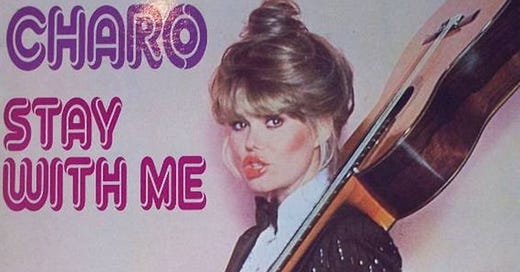


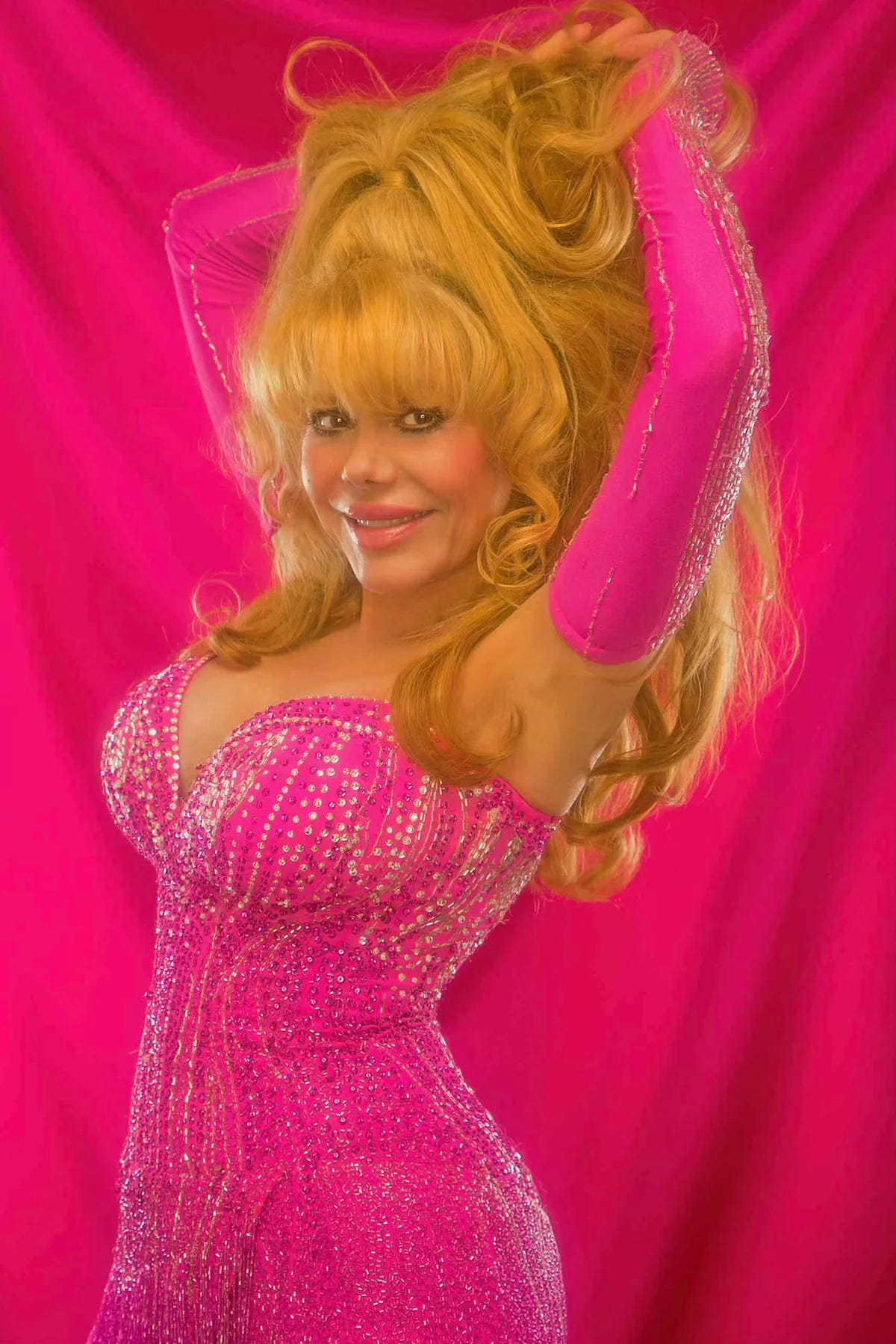
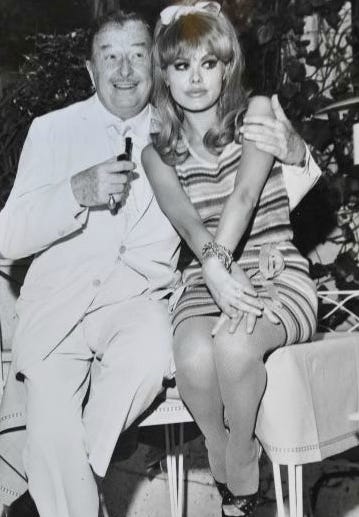
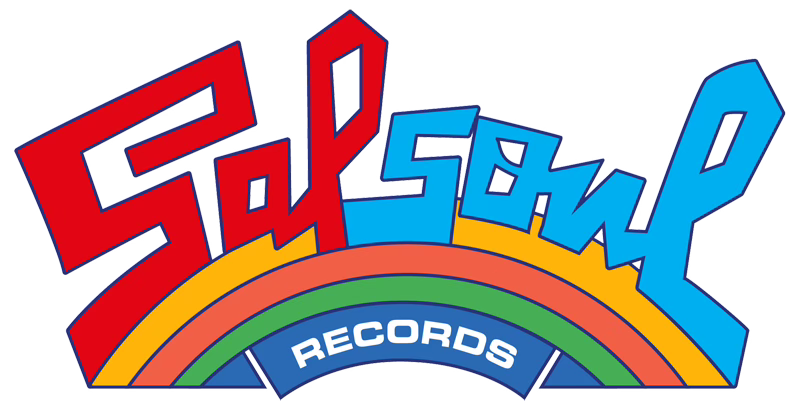
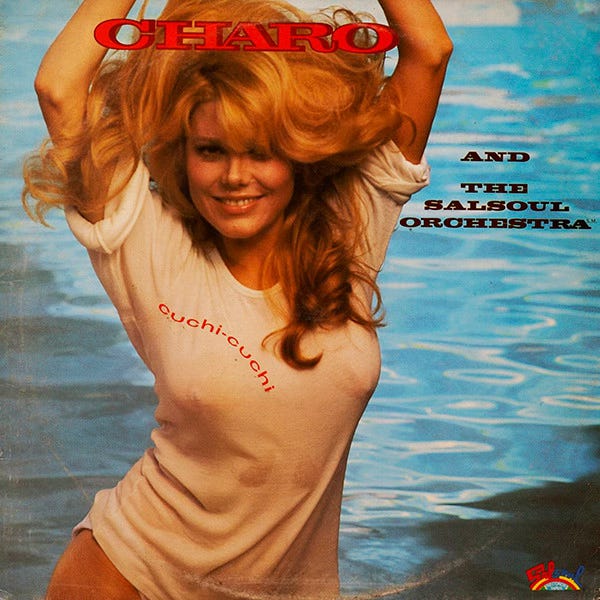

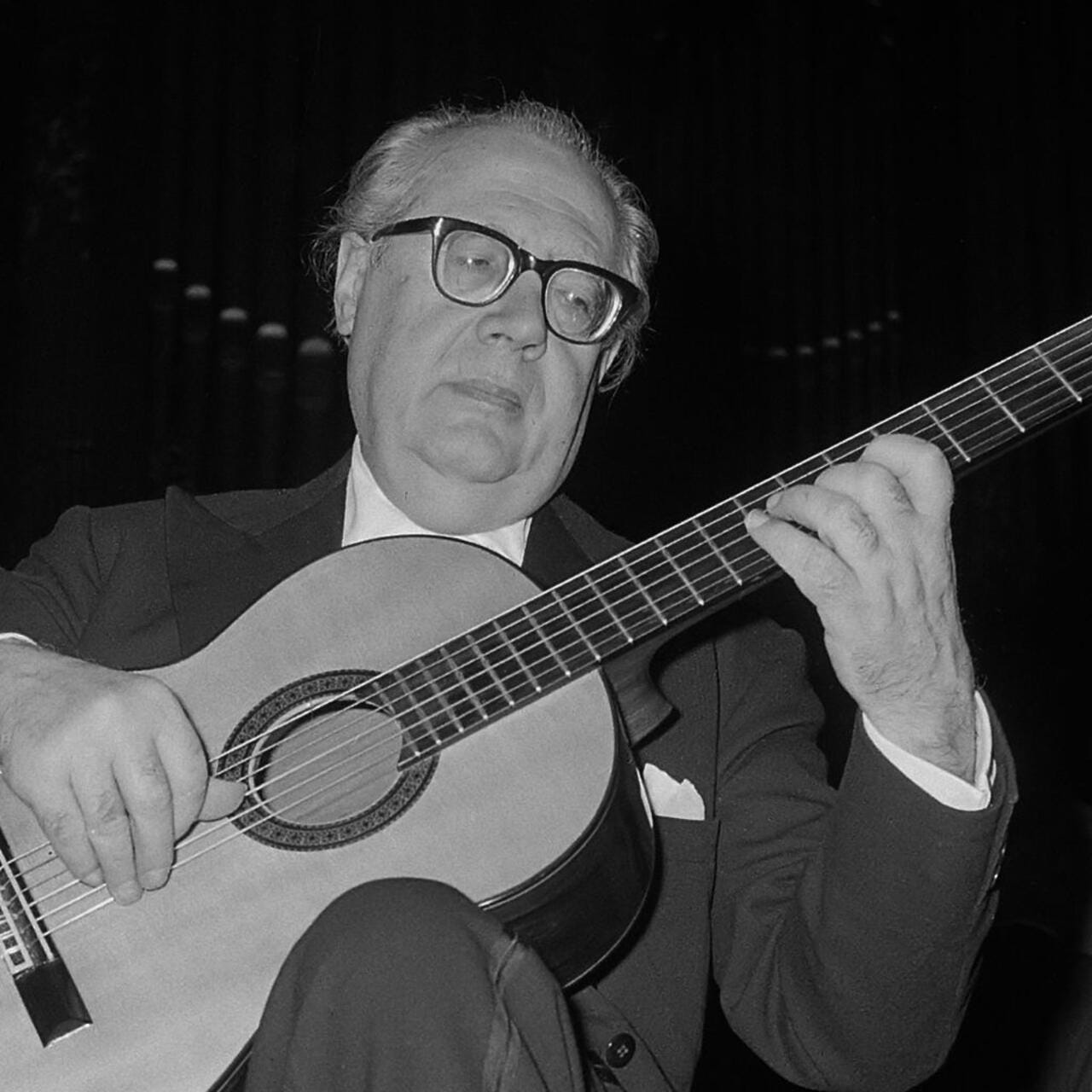
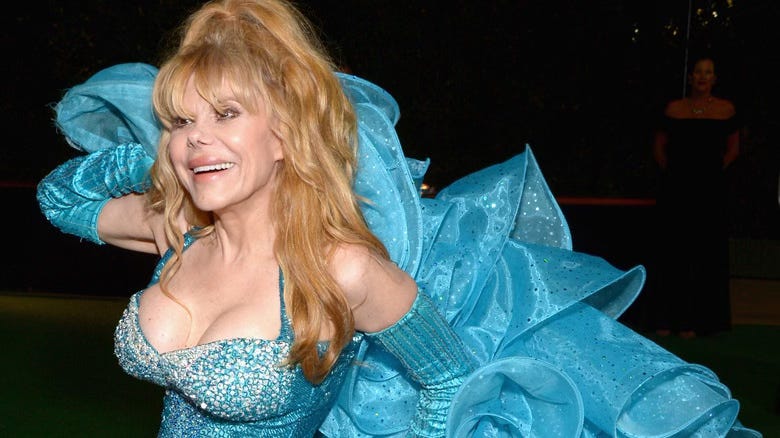
Not only do I remember Charo, I actually saw her perform once AND got to meet her! She performed for one night at a community college I was teaching at outside of Chicago. The first half was her "cuchi-cuchi" stuff but in the second act she played her flamenco guitar and stunned all of us who were surprised at how good she was! Afterwards, we attended a reception for her and she couldn't be nicer! She spent a lot of time with us and complemented my hair saying it was just like her son's. Afterwards, a few of us were out in the hallway and I asked my friend Elise where her husband Marco was. Her response: "he's with Charo." It was such a bizarre experience! When we can't find Marco today we still use that line, "he's with Charo!" I've got a photo of Frank and I with her that night that I'll share on Notes.
I had no clue she had Disco records!